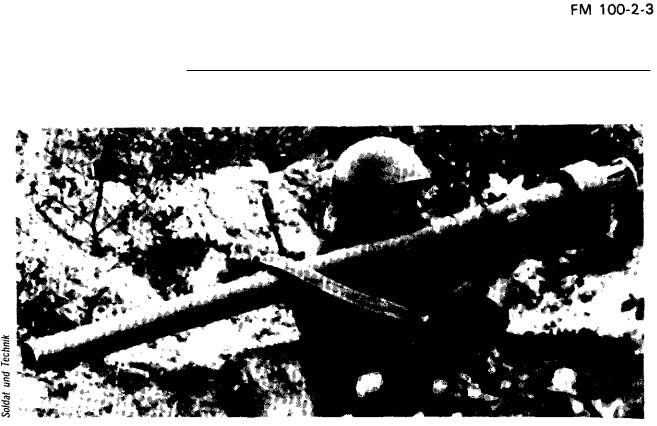DESCRIPTION:
The SA-7/GRAIL is a man-portable, shoulder-
fired, low-altitude SAM system similar to the US Army's Redeye. The missile has an HE warhead
and passive infrared homing guidance. The system comprises the missile, a reloadable gripstock, and
a thermal battery. There are two versions: the SA-7aand SA-7b.
CAPABILITIES:
Every MRB and airborne battalion h a s a n organic air defense platoon in which nine SA-7
operators with gripstocks are transported by the platoon's three BTRs, BMPs, or BMDs. A SAM
section consisting of one vehicle and three SA-7 gripstocks normally attaches to each of the battalion's three MRCs. Similar air defense platoons are organic at battalion level in air assault and airmobile assault units.
The SA-7a has a slant range of 3.6 kilometers and a kill zone between 15 and 3,500 meters in altitude. Its speed is about 470 meters per second (Mach 1.4).
The uprated version SA-7b differs from the SA-7a primarily by using a boosted propellant
charge to increase range and speed. This gives the SA-7b a slant range of about 5.5 kilometers, a ceiling of about 4,500 meters, and a speed of about 580 meters per second (Mach 1.75). However, the burn time has not increased.
Both the SA-7a and the SA-7b are tail chase missile systems. An identification, friend or foe (IFF) system can be fitted to the operator's helmet. The operator uses a permanent gripstock with attachable canister-tube stored missiles. Each operator carries a gripstock with one missile; up to four additional missiles are carried in each vehicle.
The effectiveness of the SA-7 depends on its ability to lock onto the heat source of targets, usually low-flying fixed-and rotary-wing aircraft. Although the SA-7 is limited in range, speed, and altitude, it forces enemy pilots to fly above Soviet minimum radar limitations. This results in detection and vulnerability to regimental and divisional air defense systems.
The operator engages a target by pointing the tube at the target, partially depressing the trigger,











